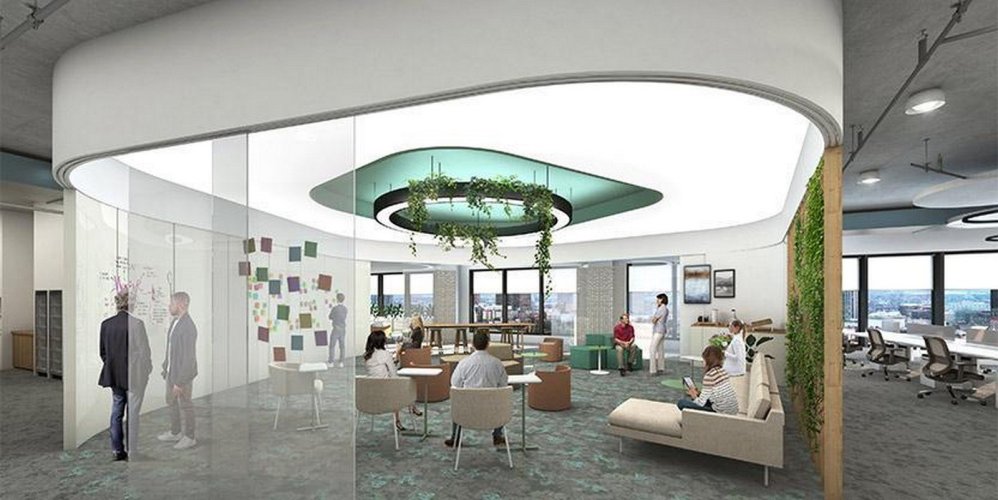In an age when each issue of our lives is crowded with seasons, locating quiet, reflective moments can appear to be an uphill war. As an architect, I am keenly aware of the impact of our built environment on human and human beauty. In response to the provision of overwhelming virtual distractions, the concept of digital minimalism has emerged as a guiding vital in architectural layout In this trouble we explore how architects can de the electricity of digital minimalism has been harnessed to create marketplaces for thoughts, collaboration and interplay in a world complete of distractions.

Understanding Digital Minimalism
Digital minimalism is not merely about decreasing screen time or decluttering virtual devices; it’s a philosophy that advocates for a greater intentional and mindful approach to technology utilization. At its centre, virtual minimalism encourages individuals to assess the cost that technology provides to their lives and to prioritize activities that align with their values and desires. In the context of structure, virtual minimalism translates into designing spaces that foster human connection, creativity, and recognition, at the same time as minimizing the distractions posed by way of generation.
Creating Distraction-Free Zones
One of the fundamental principles of virtual minimalism in architecture is the introduction of distraction-loose zones inside constructed environments. These zones serve as sanctuaries where individuals can get away from the regular barrage of notifications and immerse themselves in meaningful activities. Whether it is a cosy reading corner tucked far away from the hustle and bustle of everyday lifestyles or a tranquil outside courtyard designed for contemplation, those spaces provide respite from the virtual noise and inspire introspection and mirrored images.
Integrating Nature and Biophilic Design
Nature has a profound potential to restore our interest and soothe our senses in an increasingly digitized world. By incorporating elements of nature into architectural design through biophilic concepts, architects can create environments that promote well-being and productiveness. From incorporating herbal light and ventilation to integrating greenery and natural substances, the biophilic layout reconnects occupants with the natural world, lowering stress and improving cognitive characteristics. **Embracing Simplicity and Clarity** In a world inundated with data and stimuli, simplicity and readability are critical factors of virtual minimalism in architecture. Designing spaces with smooth strains, uncluttered surfaces, and intuitive layouts lets occupannavigate their environment simply and have awareness of their obligations handy. By minimizing visual noise and distractions, architects can create environments that assist concentration and creativity, fostering a feeling of calm and readability amidst the chaos of cutting-edge lifestyles.
Promoting Analog Interactions

While this era has surely revolutionized the way we communicate and interact, it has also eroded the fine of face-to-face connections in lots of instances. Digital minimalism in structure seeks to counteract this fashion employing designing areas that encourage analog interactions and human connection. Whether it is a communal kitchen wherein residents can accumulate proportion meals and memories or a co-operating area designed for collaboration and idea alternate, these environments prioritize actual-time interactions over digital distractions.
Designing for Mindful Technology Usage
While virtual minimalism emphasizes the significance of reducing reliance on technology, it additionally acknowledges that generation can decorate our lives while using mindfully. In architectural layout, this indicates incorporating technology thoughtfully to augment human experiences as opposed to detracting from them. From integrating clever construction systems that optimize energy performance and luxury to incorporating interactive virtual installations that engage and encourage, architects can harness the strength of technology to enhance the exceptional lifestyles for occupants even while minimizing its intrusive outcomes.
Cultivating Digital Detox Spaces

In addition to creating distraction-loose zones, architects can also lay out committed digital detox spaces wherein people can disconnect from their gadgets and reconnect with themselves and others. These areas, whether they take the shape of meditation rooms, yoga studios, or outside retreats, provide a sanctuary from the constant stimulation of virtual generation, permitting occupants to recharge and rejuvenate their minds, bodies, and spirits.
In an international in which virtual distractions abound, the standards of digital minimalism offer a guiding mild for architects seeking to layout areas that sell recognition, connection, and well-being. By developing distraction-loose zones, integrating nature and biophilic layout, embracing simplicity and readability, promoting analogue interactions, designing for conscious generation utilization, and cultivating virtual detox areas, architects can empower people to steer greater intentional and pleasant lives in an increasing number of distracted global. As stewards of the built environment, we have a unique opportunity and duty to shape areas that support human enjoyment in all its complexity, supporting us to navigate the virtual age with grace and motive.
















